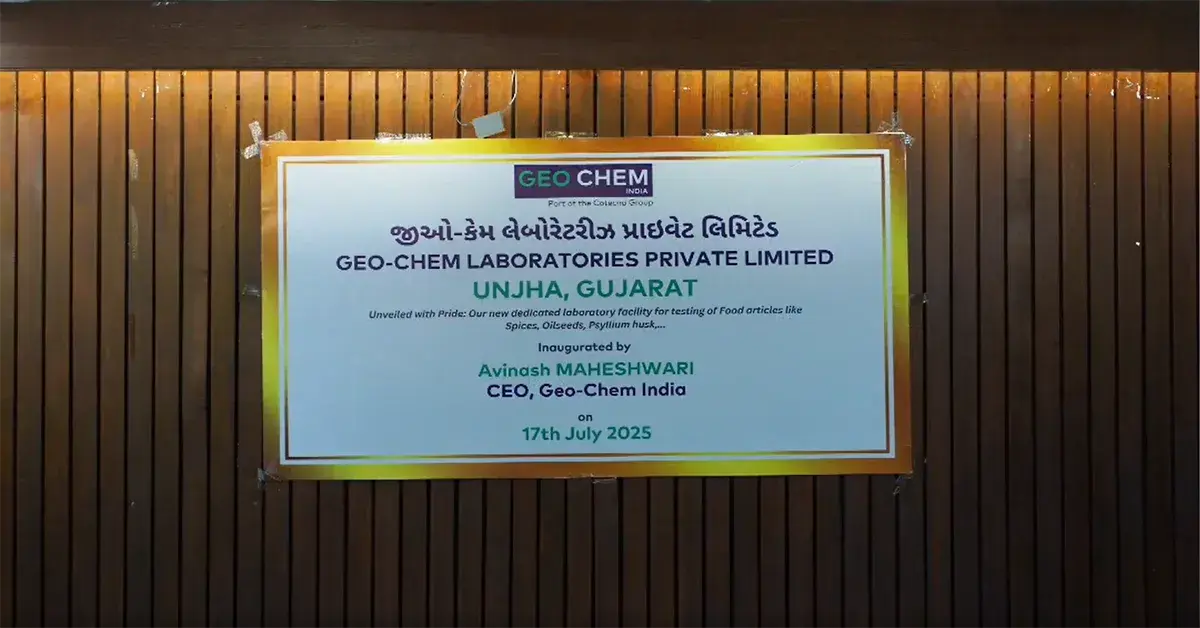Understanding Nitrosamine, Nitroso, and Azido Impurities Testing

Nitrosamine, Nitroso, and Azido impurities are classified as carcinogens because they may cause cancer. The excessive presence of these impurities can affect many organs including the lungs, brain, liver, kidney, bladder, stomach, oesophagus, and nasal sinus. Nitrosamines can be found in food, tobacco, cosmetics, toiletries, water, air and the human body. Of particular interest is the existence of nitrosamine impurities in drugs, APIs and other pharmaceutical products.
Nitrosamines can either occur naturally in the environment and body or as a result of product manufacturing processes. In recent years there has been a rise in interest in nitrosamines as various studies have provided evidence of their potentially harmful effects.
Top regulated nitrosamines
Over 300 types of nitrosamines have been identified to date. Our analytical portfolio includes, but is not limited to, the nitrosamines listed in the table below.
| Name (CAS number) | Limit (ng/day) | Source | Details |
|
N-nitrosodimethylamine, NDMA3,4 (62-75-9) |
96.0 | A by-product of several manufacturing processes and water chlorination. Small amounts of NDMA may occur in water, soil and air. | |
| N-nitrosodiethylamine, NDEA3,4 (55-18-5) | 26.5 | Used as a gasoline and lubricant additive, antioxidant and as a stabilizer in plastics. Has also been identified as a tobacco carcinogen. | |
| N-Nitrosoethylisopropylamine EIPNA 3,5 (16339-04-1) | 26.5 | Results from manufacturing processes and found in food and beverages. | |
| N-Nitrosodiisopropylamine DIPNA3,5 (601-77-4) | 26.5 | Used in some cosmetic, toiletries and cleansers. Formed unintentionally from reactions involving alkylamines chemicals during the manufacturing processes. Also found in some food and may form in the body. | |
| N-Nitrosodipropylamine, NDPA3,5 (621-64-7) | 26.5 | Used to make rocket fuel. Very toxic and leads to fatal poisonings. Forms during manufacturing processes. | |
| N-Nitrosomorpholine, NMOR3,7 (59-89-2) | 127 | ||
| N-Nitrosovarenicline, NNV8 | 37.0 | Varenicline | |
| N-Nitrosomethylphenidate, NMPH9, (55557-03-4) | 1300 | Methylphenidate | |
| N-Nitrosopiperidine3 (100-75-4) | 1300 | ||
| N-Nitrosorasagiline10 | 18 | Rasagiline | |
| 7-Nitroso-3-(trifluoromethyl)-5,6,7,8-tetrahydro[1,2,4] triazolo- [4,3- a]pyrazine11 | 37 | Sitagliptin | |
| N-Nitroso-1,2,3,6-tetrahydropyridine, NTHP3 (55556-92-8) | 37 | ||
| N-Nitroso-di-n-butylamine, NDBA3,5 (924-16-3) | 26.5 | Used in some cosmetics and toiletries and is unintentionally formed during the manufacturing process. Also found in air, water and soil as a result alkylamine chemical reactions. Can lead to stomach and colorectal cancer. | |
| N-Nitrosonortriptyline12 | 8 | Amitriptyline, nortryptyline | |
| N-Methyl-N-nitrosophenethylamine, NMPEA3 (13256-11-6) | 8 | ||
| N-Nitrosodabigatran10 | 18 | Dabigatran | |
| 4-(Methylnitrosoamino)-1-(3-pyridinyl)-1-butanone (NNK)7 | 100 | ||
| N-nitrosoduloxetine13 | 100 | Duloxetine | |
| N-nitroso-fluoxetine13 | 100 | Fluoxetine | |
| N-nitrosoparoxetine9 | 1300 | Paroxetine | |
| N-nitroso-diphenylamine NDPh14 (86-30-6) | 78000 | ||
| N-nitroso-mefenamic acid 15 | 78000 | Mefenamic acid | |
| N-nitroso-N-methyl-4-aminobutanoic acid, NMBA3,6 (61445-55-4) | 96.0 | Present in tobacco products like snuff, chewing tobacco, pipe tobacco, cigars and cigarettes. Can lead to a decrease in cell proliferation, an increase in cell death and an increase in inflammation. | |
| 1-Methyl-4-nitrosopiperazine, MeNP5 (16339-07-4) | 26.5 | Rifampicin | |
| N-nitroso-pyrrolidine NPYR3,7 (930-55-2) | 1700 | ||
| N-nitroso-diethanolamine NDELA 3,7(1116-54-7) | 1900 | ||
| N-nitrosomethylphenylamine (NMPA) | 34.3 | This is an amine that can often be a precursor of Nitrosamines in some processes. In the presence of nitrosating agents (e.g. acid conditions and Nitrites presence) NMPA can lead to the formation of Nitrosamines in drug products. |
Please note, the Nitrosamines listed above could form from the degradation process of APIs and drug products and from manufacturing processes that use nitrosating agents. Furthermore, the set limits are only applicable if a finished product contains a single N-nitrosamine.
Nitrosamine Regulation
Nitrosamines were first detected in blood pressure medicines called sartans in 2018. While there is no existing universal regulation for nitrosamine, various regulatory authorities have mandated limits for the level of nitrosamines allowed in products. The European Union, Canada and USA have taken measures to restrict the presence of nitrosamines in pharma and other products.
The USFDA allows for a limit of 96 ng/day in certain angiotensin II receptor blocker (ARB) drug products. EMA (European Medicines Agency), on the other hand, allows for 30 ng/day in sartan drug products. For new Nitrosamies for which no toxicological information exist, the limit is fixed by the authorities at 18 ng/day. As such, regulators require product testing to reduce or eliminate the presence of nitrosamines, nitroso, and azido impurities. Furthermore, to prevent or limit the presence of nitrosamines, companies must implement appropriate controls and good manufacturing practices.
ICH: Guidelines for controls of impurities and contaminants
The International Council for Harmonisation of Technical Requirements for Pharmaceuticals for Human Use (ICH) provides a guide for the study and control of nitrosamines. These guidelines are applicable to drugs and drug products produced by chemical synthesis.
Tools for routine analysis and analytical method validation include:
- ICHQ3D Elemental impurities
- ICHQ3A Impurities in new drug substances
- ICHQ3C Residual solvents
- ICHQ3B Impurities in new drug products
Nitrosamine, Nitroso and Azido Impurities Testing Methods
Nitrosamines can be detected at ppb level using liquid chromatography and/or gas chromatography coupled with a high-resolution mass spectrometer. Samples can be tested using either the targeted or untargeted analytical methods.
Targeted vs Untargeted Analysis
|
Targeted analysis (LC-MS/MS, GC-MS/MS) |
Untargeted analysis (LC-HRMS, GC-MS, GC-HRMS) |
|
Targeted contaminants defined before sample analysis |
Untargeted contaminants not defined before the analysis |
|
PRO:
|
PRO:
|
|
CONS: "We see only what we decide to look for" |
CONS:
|
The COTECNA network includes of over 40 leading laboratories across the globe. We can assist you in determining the level of nitrosamines present in your products. Our laboratories are equipped with the latest mass spec instruments like Waters UPLC H-Class MS/MS (TQS Micro), Waters LC-MS/MS (XEVO TQ-XS), and Agilent GC MS/MS (Triple Quad).
In addition, our expert teams can tailor studies based on your needs and product requirements. We offer:
- Activities and excipients interaction studies.
- Analysis of excipients, APIs and PFs.
To learn more about our services or to request for a free quote, please contact us.
Latest News

24.07.2025
Geo-Chem Launches New Food Testing Lab in Unjha, Gujarat, India
Geo-Chem India expanded its scope of work in Gujarat with the launch of a new food testing laboratory.

08.04.2025
Innovation and Precision: How Complex Diagnostics Are Transforming Plant Health in the Field
Harnessing Technology for Smarter, More Sustainable Crop Protection.

